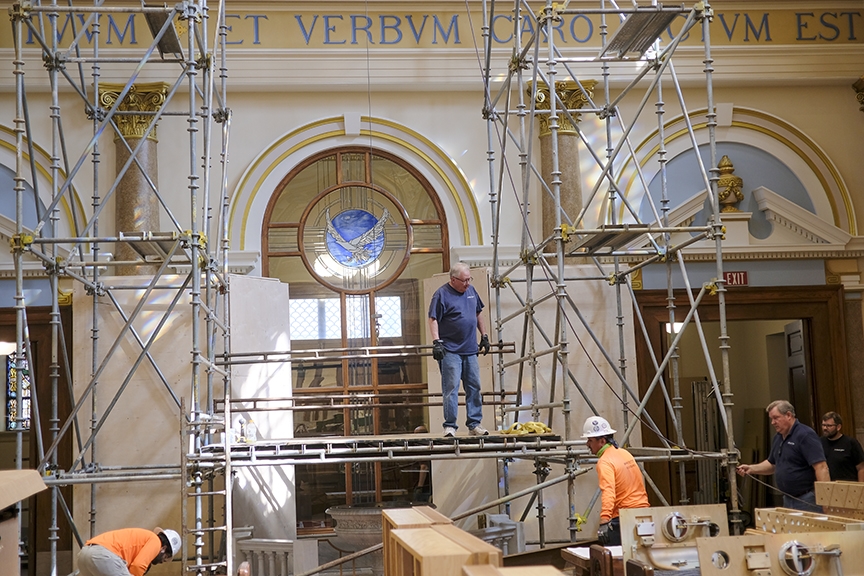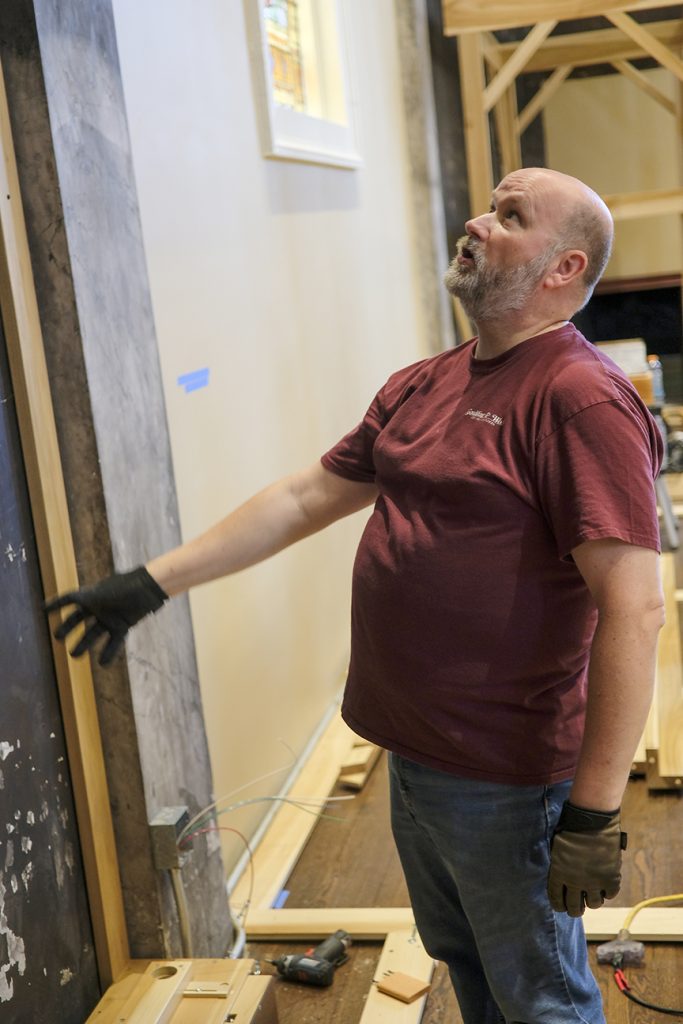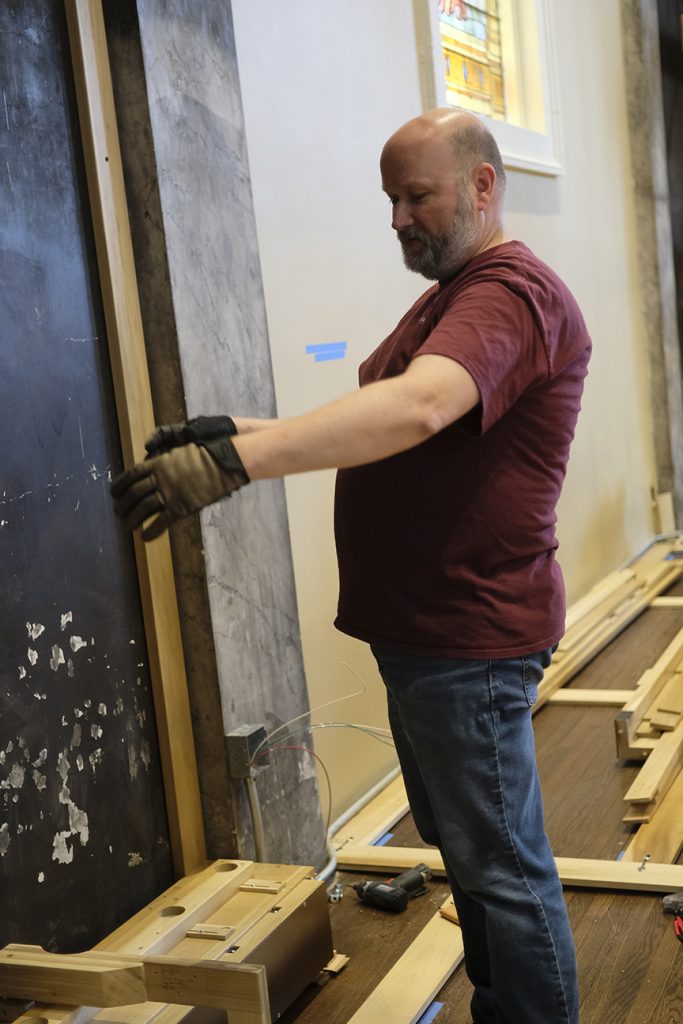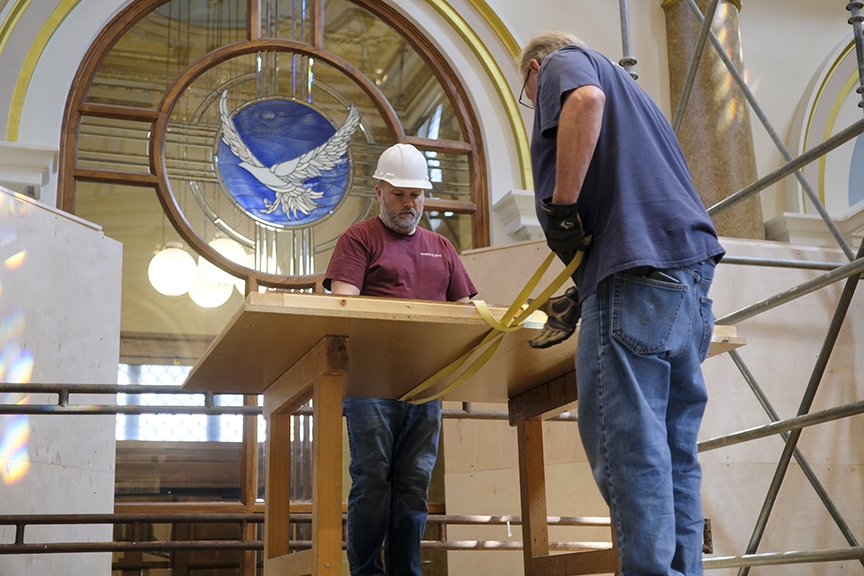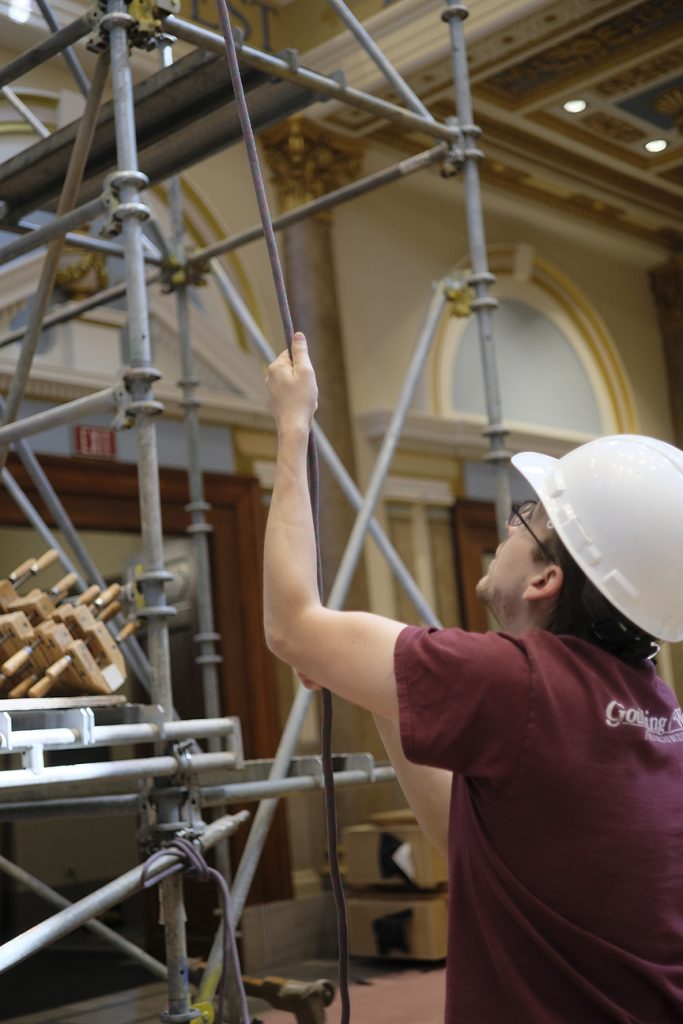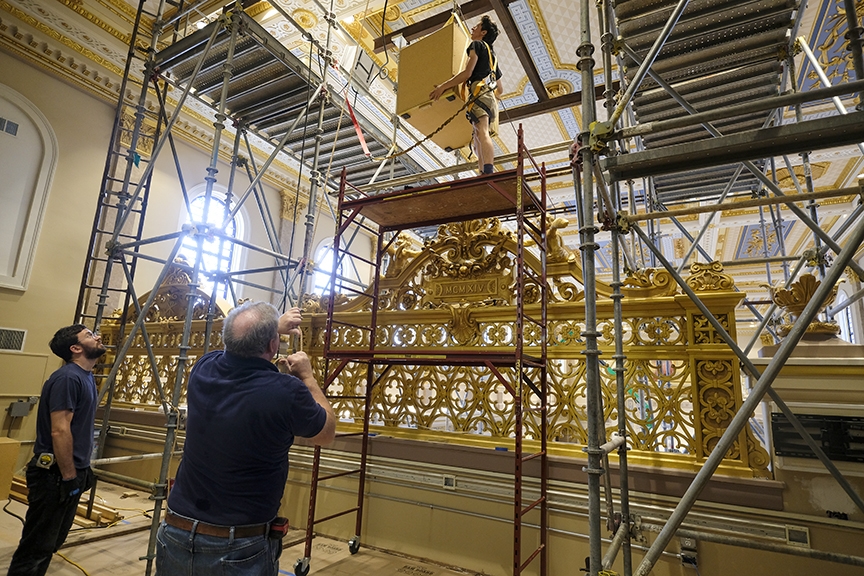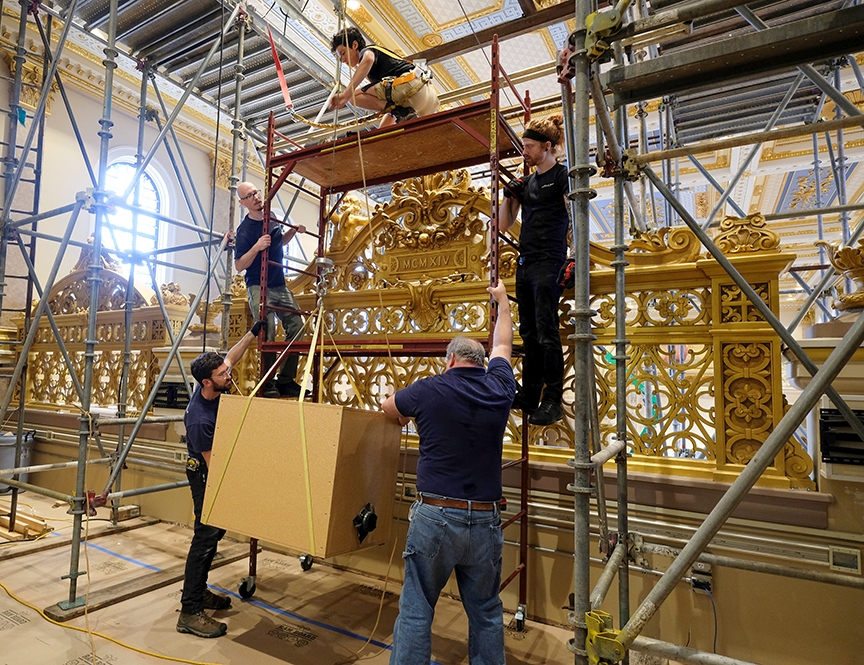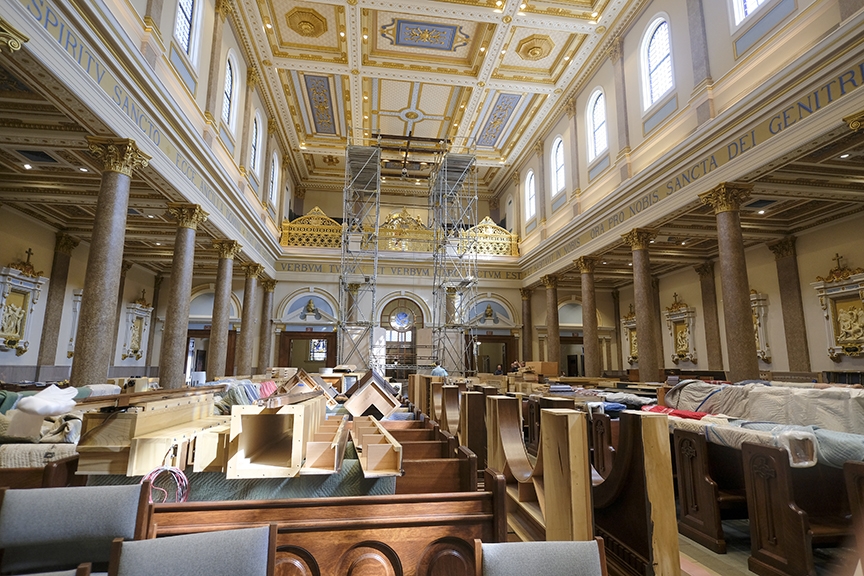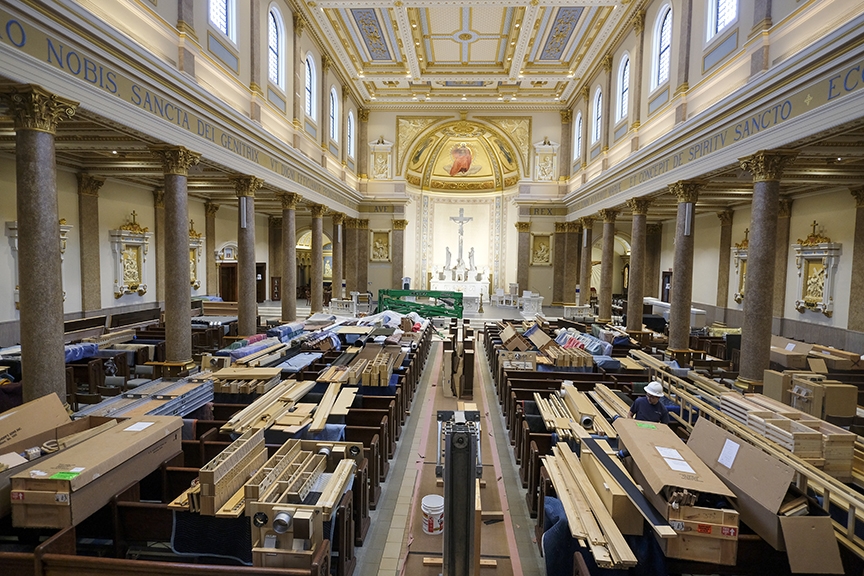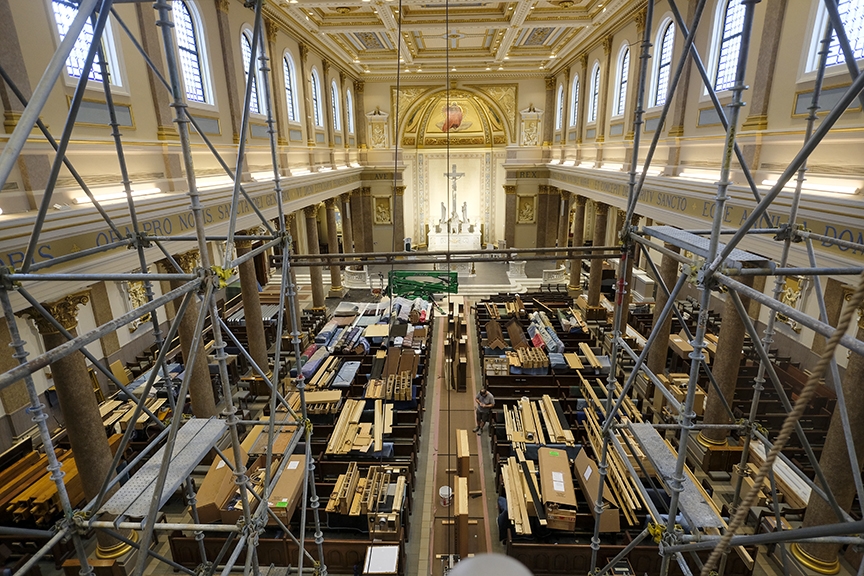
Come August, the Cathedral of the Incarnation will have an instrument befitting its beauty following the installation of a new pipe organ in the choir loft of the church, a process that began on Monday, June 26.
“This is a magnificent accomplishment due to the generosity and support of our Cathedral parishioners, and it will be something that has benefit for the Cathedral parish and the Diocese of Nashville for generations to come,” said Father Eric Fowlkes, pastor of the Cathedral. “This has been part of the restoration of the Cathedral and was something we desired to do but was something a little bit above and beyond what we could do on our own, but many people came forward to support it and make it possible.”
Several years ago, the Cathedral began its “Making All Things New” capital campaign, which has gone through two phases thus far since it started in 2014.
“This is the final component of the renovation,” Father Fowlkes said. “Beyond that, it would just be ongoing smaller projects to maintain and keep the Cathedral up to the standard of beauty we would want it to have.”
The Planning Process
Heading the project is Goulding & Wood Pipe Organ Builders based in Indianapolis, Indiana. Along with designing and building new pipe organs, they also specialize in restoring instruments, rebuilds, and instrument maintenance.
While it’s the first project they’ve done for the Diocese of Nashville, it is the third instrument they will have built in Tennessee, the first two being for St. John’s Episcopal Cathedral in Knoxville and the St. George Episcopal Church in Germantown outside of Memphis.
Mark Goulding, owner of Goulding & Wood, which began in 1980, said it’s not the first Catholic institution they’ve worked with either, noting projects they’ve collaborated on for Loyola University in Chicago, St. Meinrad Archabbey and School of Theology in St. Meinrad, Indiana, and the Basilica of the National Shrine of the Immaculate Conception in Washington, D.C.
While the process of installing the new 40-stop pipe organ, which is made up of tens of thousands of individual pieces, including more than 2,300 pipes, in the Cathedral has just begun, the process began nearly two years ago as the company worked closely with Jackson Schoos, director of music at the Cathedral, to be sure they were creating just the right instrument for the space.
“We build our instruments specifically to help support the liturgy. We, in conversations with the musicians, in this case Jackson, discuss the specific sound expected to be heard,” Goulding explained. “That all goes into the process of deciding what the specifications will be, the different stops, the different voices he wants to be in the organ, and then we have to take those expectations and voice the pipes so that, in this acoustical space, it would sound the way he would expect it to sound.”
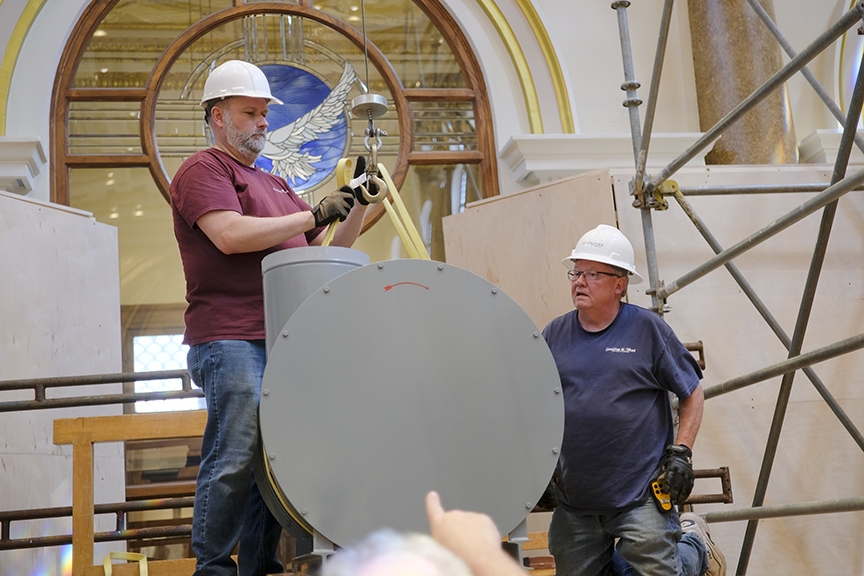
This involves manipulating the mouthing of the pipes, how much wind each pipe gets, and, to a certain extent, the material the pipe is made out of, he explained. “All these factors go into it.”
After these factors are determined, Goulding said the team, made up of about nine people, first puts the instrument together in the erecting room of the shop.
“We completely assemble the instrument and try to mimic the same situation that it’s going to be in at the church to be certain that it all works properly,” he explained. “Once the organ is tested, we take it all apart, and it very carefully gets wrapped and loaded into the truck.”
The Installation
Goulding & Wood, along with the thousands upon thousands of pieces of the organ, which will be the company’s 54th new pipe organ build, arrived at the Cathedral on Monday, June 26. Upon organizing the pieces, the process of lifting each piece, part-by-part, into the choir loft began in the mid-morning of Wednesday, June 28.
“Over the next several weeks, the thousands of wood and metal components will be hoisted into the rear gallery of the church and assembled into a fine new organ, set to serve us for generations to come,” according to an explanation in the church bulletin, prepared by Schoos.
“The majority of the wood is yellow poplar, which is harvested and farmed in the Midwest,” Goulding explained. “The casework that you see when it’s all done is made of red oak, which matches the same wood species as the other wood in the church.
“The pipes are made out of several different materials,” he continued, including sugar pine and poplar wood, as well as various metals including zinc, aluminum, tin, or spotted metal which is a combination of tin and lead.
“After all the parts have been put back together, the work of ‘tonal finishing’ for each one of the pipes will take place, fine adjustments are made so that each pipe in a rank (set) plays at a uniform volume and with a consistent tone quality and speaks to its best advantage in the very fine acoustic of our Cathedral,” the bulletin write-up continues.
While the materials have some bearing on the sound of a pipe, “what makes a pipe have its specific sound or tonal quality is the construction and the style of construction and the voicing process that it goes through,” Goulding said.
This new organ will replace the original Henry Pilcher’s Sons 19-rank pipe organ that was installed in 1914, and was later renovated to include 22, and then 25 ranks.
“That organ reached its life expectancy and had some issues that required a lot of maintenance to be able to maintain it,” Father Fowlkes explained. “They did use as much of the original pipe organ as was possible in constructing the new one.”
“Three ranks of pipes have been retained from the original 1914 organ, one from the 1977 refurbishment, and one rank from those added in 1999,” the bulletin write-up explains. “Size is certainly not the only characteristic of a pipe organ that will establish its ultimate success. Of greater importance is the totality of its conceptual design, which, when appropriately done, will create something that is much more than the sum of a conglomeration of disparate parts.”
Tom Nichols, who has been with Goulding & Wood officially for six years, but an advocate of the company for 25, said this new, larger pipe organ will be akin to having the 64-count box of crayons everyone wanted in school.
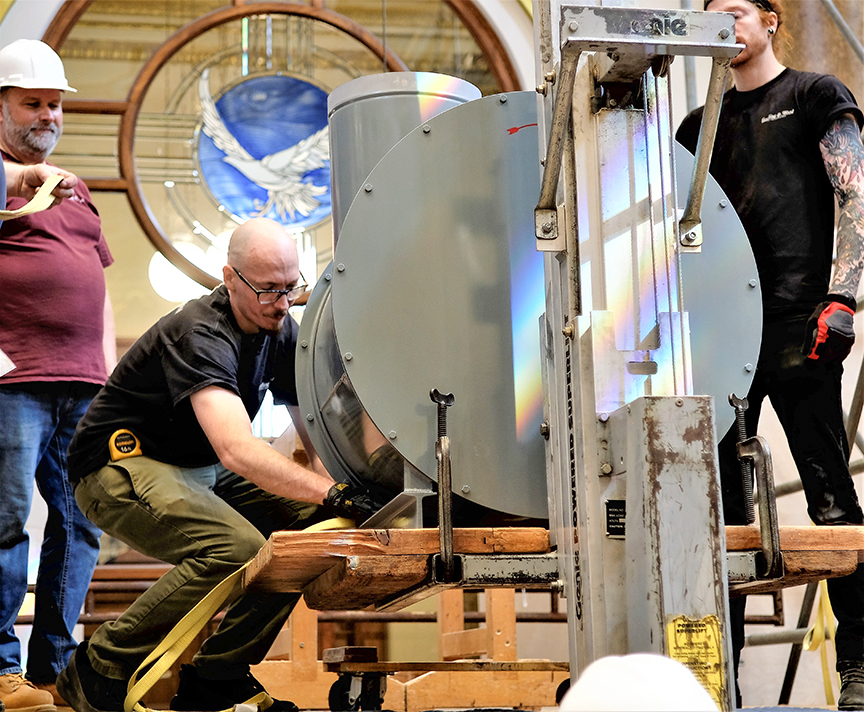
“It’s like when we were kids and you were in art class, and you had the 16-count box of crayons, and you were jealous of the kids whose parents bought him the 64-count box of crayons. He could draw a prettier picture because he had more crayons to pick from,” said Nichols, who is an assistant organist for the Saints Peter and Paul Cathedral in Indianapolis. “This organ, with its 40 stops as opposed to the original 25, has more musical crayons to pick from for musical flexibility and just overall sound energy.
“Every Cathedral is worthy of having an instrument befitting its beauty,” he continued. “The instrument that was here served for many years but going from a 25-stop pipe organ to a 40-stop pipe organ will give the musicians some additional flexibility, as a solo instrument as well as having a greater range of sounds to choose from when accompanying a cantor or a small group to a cathedral choir and the whole assembly.”
“The church’s documents on the liturgy stipulate that the organ is the preferred and primary instrument for worship and that is very, very simple and good acoustical reasoning,” Nichols added. “The pipe organ is the king of instruments. That’s the only instrument that can fill a room the size of this beautiful cathedral, and it’s an honor to build an instrument for a beautiful and historical house of worship.”
The Benefit
With the dream of a new organ in sight, Father Fowlkes said he is excited about what it means for the future of the Cathedral.
“It’s going to be phenomenal, and it will be so exciting for people to hear this,” Father Fowlkes said. “We’re hoping to have some events to introduce the organ to people so they can come and gather and hear this wonderful addition to our Cathedral church.
“I’m very thankful to Jackson, and to everyone involved, because it’s through his vision and his leadership that this is coming to take place.”
“The Cathedral is the mother church of the diocese, and it’s a gathering place where Catholics from all over our area come together for significant events and for worship in solidarity with our bishop whose Cathedral church it is,” he continued. “I always see the Cathedral as not only the Cathedral parish, which we’re very grateful for, but the central church of the whole diocese that everyone feels welcome to come to and see as our mother church, and hopefully, this beautiful new instrument will only enhance that.”
As the work continues to lift each piece into the Cathedral’s gallery, daily Masses and weekend Masses will be held in the Fleming Center. Masses are expected to resume in the main church by the July 8-9 weekend.
